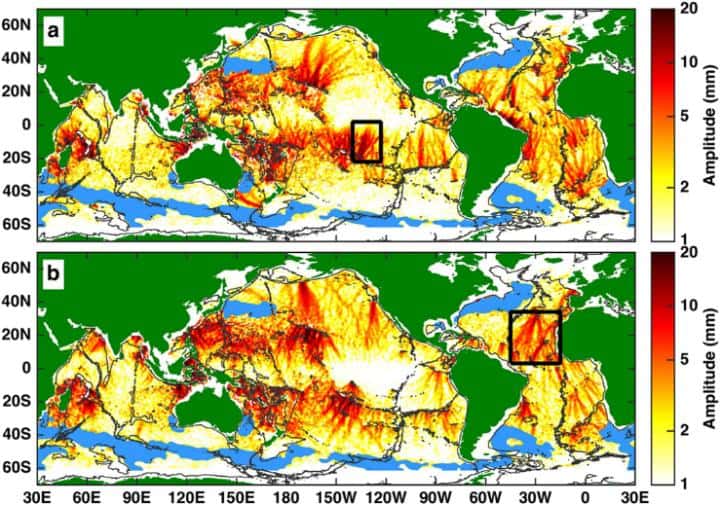
For scientists trying to monitor, model or predict climate change, accurate information about temperatures on the Earth are vital, and this just doesn't just mean on the land’s surface; it means understanding how temperatures are changing throughout the atmosphere, and what happens to heat when it percolates through the various layers. One important factor is surprisingly hard to measure: how heat affects the sea.
It's thought that a great deal of the heat that passes through the atmosphere, and which climatologists believe is trapped by greenhouse gases, ends up in the oceans. But the only part of the sea where temperature is easy to measure is the surface; figuring out temperatures in the depths is neither easy nor cheap, but because of the huge volume of water on the planet and the amount of heat that it can store, it's very important for assessing the effect on the overall climate. Oceanographer Zhongxiang Zhao of the University of Washington has been studying the behaviour of the deep ocean and believes that he might have found a new method involving satellite data that is already available.
The only definite way of directly measuring deep ocean temperature is using floats that work at depth; these are expensive to maintain, however. Another way of indirect measurement is to measure the time that the acoustic pulse takes to traverse a set distance, as sound travels quicker in warmer water than cooler. But acoustic pulses can disorientate marine mammals, and use of this technique was halted in 2006.
Zhao's technique uses a lesser-known behaviour seen in the oceans: internal tidal waves. Like the familiar surface tides, these are caused by the gravitational pull of the moon (and to a much lesser extent, that of the sun). Internal tidal waves are very much smaller than this, and Zhao explained that they tend to start at submarine ridges on the ocean’s bed, when tidally-driven currents are forced over them. They then travel with a wavelength of about 160km and a speed of 3 to 4m/sec. Climate change is warming the upper oceans more than the depths, and this increases the speed of the internal tidal waves.
Importantly, an internal tidal wave increases the height of the sea surface by about 2cm, even though the wave itself maybe 20 to 50m high. This is 50 times smaller than the height of the tide at the surface, but can still be detected by satellites tracking the ocean height. The complex behaviour of water waves makes this difficult, but Zhao has spent a decade working out how to differentiate these height changes due to internal tidal waves from other phenomena.
Zhao explainsedthat internal tidal waves along two particular paths a the Atlantic Ocean have increased by one per cent in the last 20 years; this corresponds to a temperature increase which was in agreement with one measured by the Argo oceanographic floats, which float 2km below the ocean surface. "This method offers a long-term, cost-effective, environmentally friendly technique for monitoring global ocean warming," he said.
Comments on this story have veered off-topic and have now been closed.





Collaboration to address viable solutions for VAWG database
<blockquote>address the lack of standardisation, coordination, and collaboration of gender disaggregated data intelligence across various regions,...